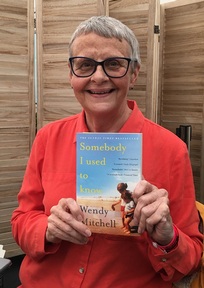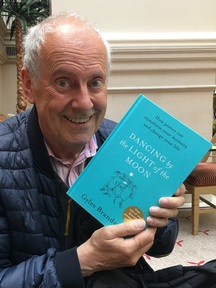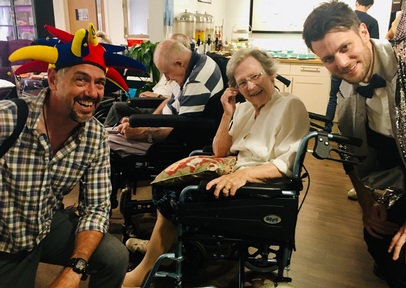Quality reminiscence therapy connects dementia patients with their life histories
Reminiscence therapy is a versatile science that gives care providers a means to fight against swift cognitive decline, once an adult has been diagnosed with dementia.
While there remains no cure for dementia, care providers looking after the UK’s increasing number of adults with conditions like Alzheimer’s are faced with the challenge of prolonging an individual’s health and well-being for as long as possible. By stimulating cognitive ability through reminiscence, experts agree that the effects of memory loss can be delayed.

Writing in the Journal of Clinical Nursing, ‘Seeing the person behind the patient: enhancing the care of older people using a biographical approach’: Clarke, Hanson and Ross, explain: “Biographical approaches provide older people with opportunities, if they so desire, to talk about their life experiences family, friends, work history, hobbies often using photographs and personal belongings as triggers to discussion. Exploring older people’s past and present lives with them, particularly the circumstances which have shaped their experiences, potentially provides greater insights into their needs and aspirations.”
So reminiscence therapy can prove an invaluable accompaniment to whatever medical treatment an individual might be prescribed but, to care homes focused upon making the most of personal life experiences to achieve this, the process is never an exact science, with carers challenged to find a different method for each individual depending on what memories they happen to engage with.
Kate Gridley, lead researcher at the University of York’s Social Policy Research Unit, says more: “Everybody has a life story. These are rich and varied and can be used to communicate who we are to the people around us. People with dementia sometimes need help to communicate their histories and identities.”
Dementia charity the Memory Box Network highlight four key content types that therapists can use to help connect an individual’s surroundings to years gone by: these are written material, audio files, still images and moving images. A healthy range of resources should allow providers to link with the five areas of major emotive drive: which are social inclusion, family and friendships, loves and losses, life’s changes, and achievements and disappointments.
Care homes that embrace this challenge often find themselves inspired by the many unique and unusual ways that social events, outings and activities can be used to stimulate memory.

Housing and care provider Sanctuary Care Ltd, for example, found that by constructing old-fashioned sweet shops in their care homes older residents could experience a link to their youth.
Director of care Len Merton comments: “A little imagination really does go a long way and it is incredible how many authentic items can be found in your loft at home, in second hand shops and online.
“Areas like these are wonderful for reminiscence, especially for our residents with dementia, prompting fond memories that may have been locked away. They are also a great talking point for our residents to share stories of their younger days with the team, their loved ones and of course each other.”
Anchor is another group looking for innovative ways of stimulating memory in their care homes, for which it has embraced the contribution of community interest company Life Story Network (LSN) – an organisation set up to help those using life story as therapy to share their experience and expertise.
Activities co-ordinator Carl Martin, was able to take a fresh and person-centred approach to helping adults with dementia thanks to LSN training, which he subsequently used to impact upon the lives of residents of The Firs, in East Anglia, such as client Nancy Hughes. Mr Martin speaks of how he got to know and understand Ms Hughes better as a result, saying: “At Anchor we recognise that knowing our customer is key to providing brilliant services and life story work is an important way of achieving this.
“The Life Story Network training and its approach enabled me to discover the wonderful life story of Nancy Hughes, who lives with us. Working at The House of Worth in London, Nancy served royalty and aristocrats and had an infamous encounter with Wallis Simpson! Clients adored her, and would have her over for lunch, and escort her by Rolls-Royce. Her story has a real twist, as, amid all the glamour, Nancy and her husband lived their own version of ‘The Good Life’ and moved to a farm where life couldn’t have been more different from the one in London they left behind.

“I was inspired, entertained and ultimately privileged to learn about Nancy’s incredible life. For me, that’s what the LSN approach is all about – demonstrating that each and every one of us matter. All of our experiences – loves, woes, joys – all of it is necessary and relevant. I was able to build a really strong relationship with Nancy and her family, which in turn, helped me deliver a more person centred approach.”
LSN chief executive Anna Gaughan comments: “Excellent care requires knowing the person being cared for not just recognising and dealing with their dementia.
“Life Story Work provides an opportunity for professional and family carers to recall and retell the life story of the person being cared for, creating empathy and building a three dimensional picture of that individual to support the present and their future.”
However, although the positive effects of this type of approach is well-documented, providers are urged to appreciate that reminiscence therapy should not be used as a means to an end. Therapy has its limitations as far as each individual is concerned the further their condition progresses.
As pointed out by Burns, A. & Winblad, B in ‘Narrative Ethics and Ethical Narratives in Dementia, ‘There is a stage of dementia which most people reach, when traditional reminiscence or life story work can no longer work and when it can even be counter-productive.’
Helen Bate managing director of , specialists in books for people with dementia, comments: “At this stage people can no longer remember many of the facts about their lives; where they went to school, where they worked or lived, and even who they were married to. To try and push them to remember these things can have no benefits and can lead to them becoming disengaged and even distressed.”

Although Ms Bate insists there is still a great deal that care providers can do, employing subtler methods to maintain a beneficial atmosphere.
She continues: “When this happens a different sort of reminiscence is needed and this is sometimes called emotional or spiritual reminiscence. This is when carers must tap into the things that meant something special to an individual. It could be horse racing, babies, gardens, cats, the sea, embroidery, mountaineering or a million other things. If we know what these things are for any one individual, then it can be easy to try and provide suitable experiences and resources that can mean the difference between meaningful and meaningless communication for that person.
“Usually, however, most carers and even some families don’t know the type of things that may provide a deep emotional connection with someone. It is then that carers need to provide as wide and varied a range of visual or physical prompts to try and discover the things that matter.
“Someone with dementia may feel anxious that they don’t remember who the blonde lady is that keeps visiting them, or why there is a picture of a strange couple getting married on their mantelpiece. They can feel reassured and content however, just sitting with the lady or a carer, and looking at a picture book that has wonderful images of pets or the seaside, because they always loved their own pets and they had wonderfully happy childhood holidays at the seaside. They may no longer be able to recall the pets they had, or where they spent their holidays, but tapping into the emotions connected with those memories can still bring comfort and enjoyment, and can help carers understand the person behind the dementia.”
Latest Features News
 25-Nov-19
2019 Election: Boris Johnson leaves social care in 'too difficult box' but Labour vows to end 'crisis'
25-Nov-19
2019 Election: Boris Johnson leaves social care in 'too difficult box' but Labour vows to end 'crisis'
 18-Oct-19
Podcast: Wendy Mitchell and dementia: 'My biggest fear is not knowing who my daughters are'
18-Oct-19
Podcast: Wendy Mitchell and dementia: 'My biggest fear is not knowing who my daughters are'
 27-Sep-19
Exclusive: Care minister backs care workers' call for time off to grieve and attend funerals
27-Sep-19
Exclusive: Care minister backs care workers' call for time off to grieve and attend funerals
 19-Sep-19
Podcast: Gyles Brandreth says poetry helps ward off dementia
19-Sep-19
Podcast: Gyles Brandreth says poetry helps ward off dementia
 30-Aug-19
Edinburgh Fringe funnyman joins comics facing toughest audience at care home gig
30-Aug-19
Edinburgh Fringe funnyman joins comics facing toughest audience at care home gig